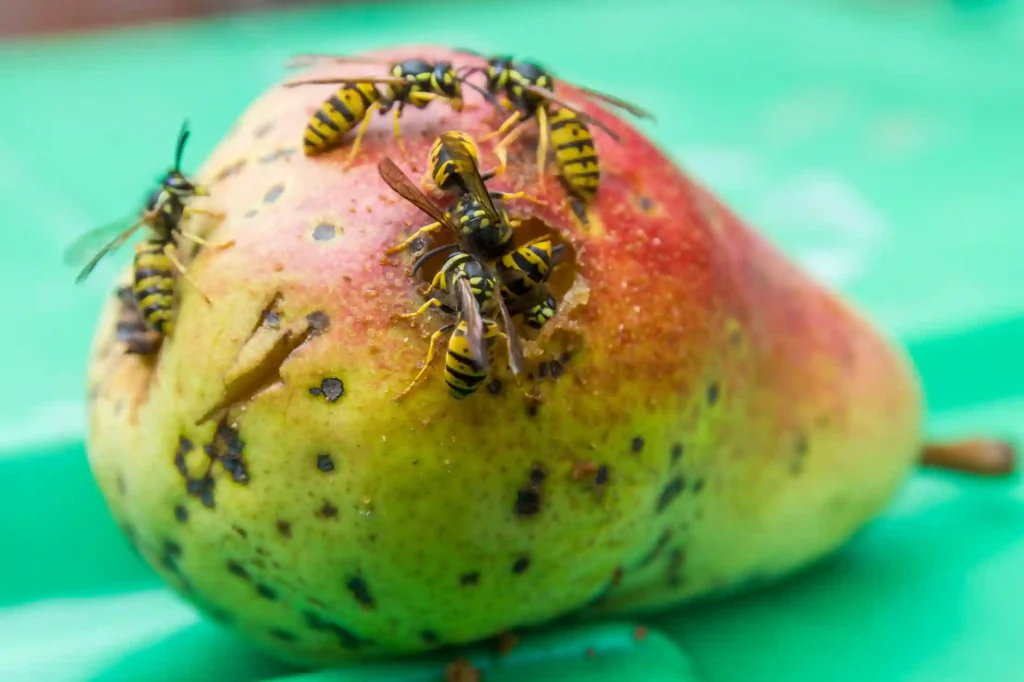Are you tired of those annoying little invaders swarming around your kitchen? Fruit flies are notorious for ruining a perfectly clean space and seem to multiply faster than you can blink. But don’t worry—help is here! Whether they are found in the kitchen, living room, or any other part of your house, here, you will find samples of the best ways of getting rid of fruit flies and regain control of your living space. From tricky pitfalls to herbal medications, let’s get into the water and pop this difficulty for good.
Understanding the Fruit Fly Problem
What Are Fruit Flies?
Drosophila melanogaster commonly referred to as fruit flies, are small flies that are famous for feeding on the fruits and vegetables that have been left to ferment. You cannot even see this white-colored worm at first glance they have a length of about 1/8 inches but their population explodes especially during summer or together with high humidity.
Why Are They So Persistent?
Fruit flies are drawn to overripe or rotting produce, drains, and even tiny spills of sugary liquids. Their lifecycle is shockingly fast: one female can lay up to 500 eggs at a time, which hatch into larvae within 24 hours! This explains why your fruit fly problem can go from mild to overwhelming in no time.
How to Get Rid of Fruit Flies Naturally
1. Clean Up the Source
The first step in eliminating fruit flies is removing what attracts them. Inspect your kitchen and dispose of:
- Overripe fruits and vegetables.
- Spilled juices or sugary residues.
- Garbage that hasn’t been emptied for a while.
Pro tip: Wipe down countertops with vinegar or bleach to kill any lingering eggs or larvae.
2. DIY Fruit Fly Traps
Homemade traps are an affordable and effective way to catch fruit flies. Here’s how to make one:
The Vinegar Trap
- Fill a small bowl with apple cider vinegar.
- Add a few drops of dish soap (this breaks the surface tension, causing the flies to sink).
- Cover the bowl with plastic wrap and poke small holes.
Place the trap near the infestation site and watch as the flies are drawn in.
The Wine Trap
- Leave a small amount of red wine in an open bottle.
- Add a funnel at the opening to trap the flies inside.
3. Use Natural Repellents
- Essential Oils: Flies dislike the smell of lavender, eucalyptus, and lemongrass. Add a few drops to a spray bottle with water and mist your kitchen.
- Herbs: Basil and mint plants act as natural deterrents.
Preventing Fruit Fly Infestations
1. Proper Food Storage
- Keep fruits and vegetables in the refrigerator or sealed containers.
- Avoid leaving produce out for extended periods, especially in warm weather.
2. Regular Cleaning
- Clean your drains: Use a mixture of boiling water and baking soda to eliminate breeding sites.
- Empty garbage and compost bins daily, especially if they contain organic waste.
3. Inspect Groceries
Before bringing produce home, check for bruises or signs of overripeness, as these can harbor fruit fly eggs.
Why Are Fruit Flies a Problem?
Annoying as they are, fruit flies are worse, since they can transfer bacteria from spoiled foods to plates and cutleries. This is dangerous to your health especially if you are preparing foods in the affected area. The CDC, in its Foodborne Illness Cost Calculator, reveals that those foodborne diseases originating from poor hygiene practices have a staggering cost estimate of billions of dollars in healthcare costs. Source: CDC.
Scientific Insights on Fruit Fly Control
Recent researches demonstrate that the number one erotic of the fruit flies is the carbon dioxide emissions produced by fermenting fruits and not the fruits themselves. Researchers suggest that modifying the chemical composition of traps can enhance their effectiveness. Source: Nature.
Further demographic indicators show that population density areas, especially those not well covered in terms of waste disposal facilities, consistently record increased rates of fruit flies. This problem can, however, be greatly enhanced through investments in the management of waste.
Conclusion
For such a small insect, fruit flies can cause significant damage to a person’s food or be a major inconvenience. Fortunately, if you have sorted out all their behavioral characteristics and habits which have been described above, and applied the methods listed above, you will be able to learn how to get rid of fruit flies for good. Depending on whether you decide to make traps all by yourself, use natural repellents, or if you decide to carry out very thorough cleaning, it will take time. Farewell to these little no-good creatures and welcome a fly-free home!



